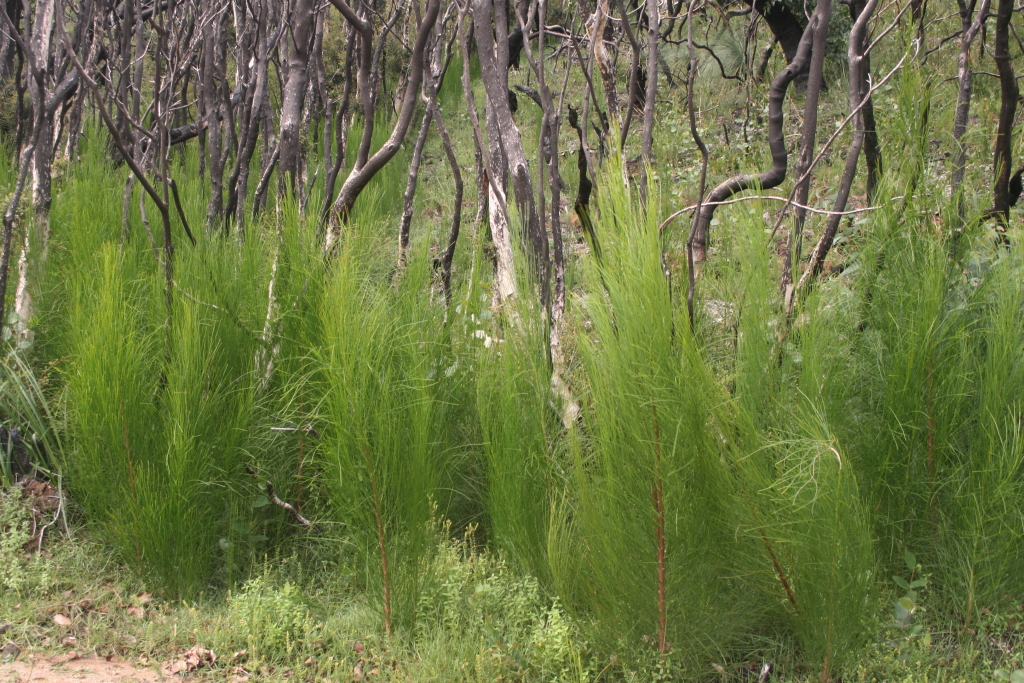Viminaria juncea
(Schrad. & J.C.Wendl.) Hoffmanns. Golden SprayShrub usually 1–5 m tall; branches erect or pendent, terete, striate, bright green, glabrous. Juvenile leaves 1–3-foliolate; leaflets ovate to linear-lanceolate, mostly 1–6 cm long, 3–15 mm wide; mature leaves reduced to long, wiry petioles 3–25 cm long; stipules lanceolate, c. 1 mm long, glabrous. Inflorescence 20 cm or more long; pedicels to c. 5 mm long, glabrous; bract lanceolate, 2–4 mm long, decurrent, glabrous or appressed-pubescent. Calyx campanulate, c. 4 mm long, more or less glabrous, teeth triangular, subequal, shorter than tube; corolla 8–10 mm long, yellow to orange, often with reddish markings; standard orbicular, emarginate, yellow with reddish streaks; wings oblong, yellow; keel obtuse, reddish. Pod obovoid, 4–6 mm long, 3–4 mm wide, almost black, surface wrinkled or reticulate; seed 1, ovate-reniform, c. 2–3.5 mm long, light brown, mottled, with a small annular aril. Flowers Oct.–Feb.
LoM, MuM, Wim, GleP, VVP, VRiv, GipP, OtP, WaP, Gold, CVU, GGr, DunT, NIS, EGL, EGU, WPro, HSF, OtR, Strz. Also WA, SA, Qld, NSW, Tas. Widespread and often locally common, mostly across higher rainfall parts of the State. Often grows in swampy depressions in heathland or woodland.
Jeanes, J.A. (1996). Fabaceae. In: Walsh, N.G.; Entwisle, T.J., Flora of Victoria Vol. 3, Dicotyledons Winteraceae to Myrtaceae, pp. 663–829. Inkata Press, Melbourne.
 Spinning
Spinning


